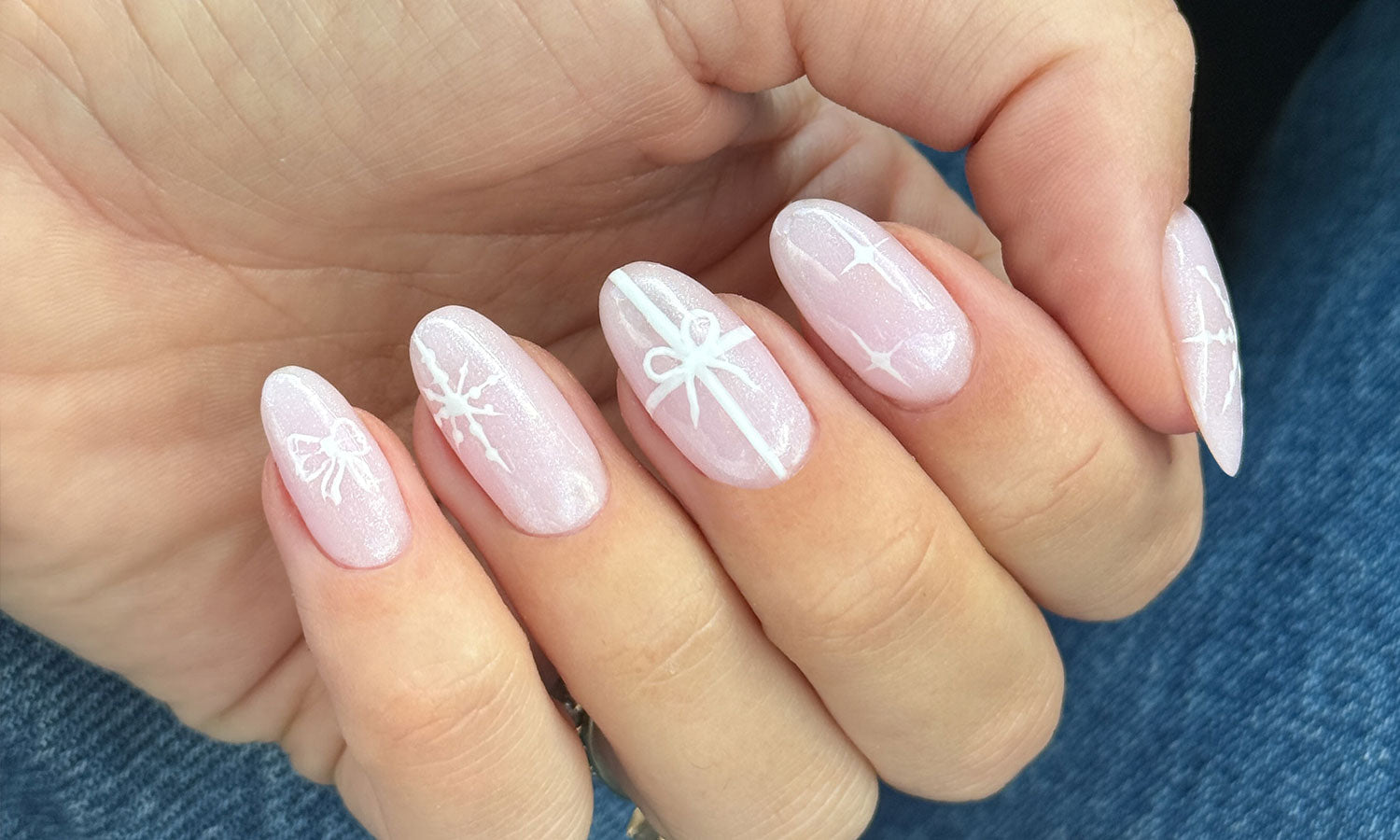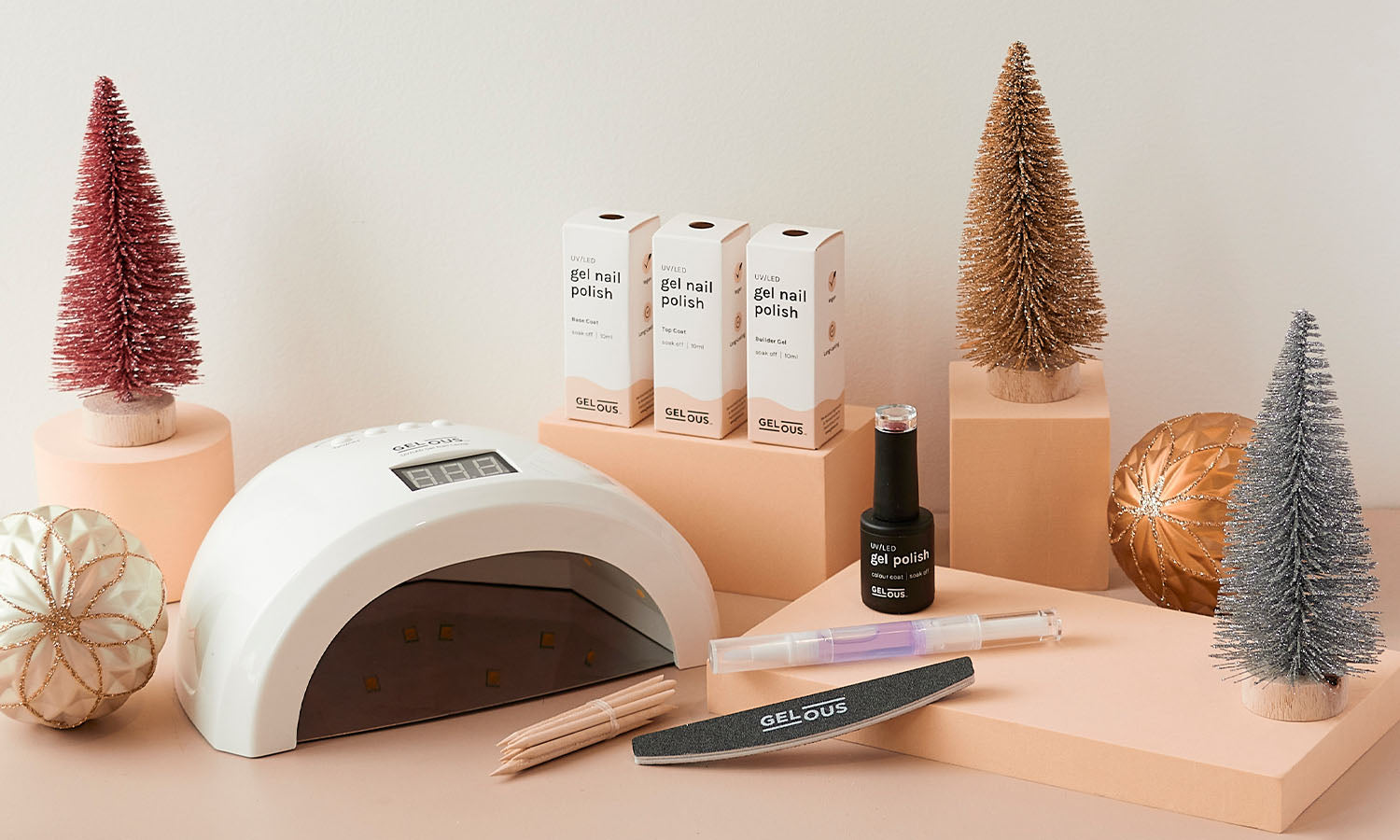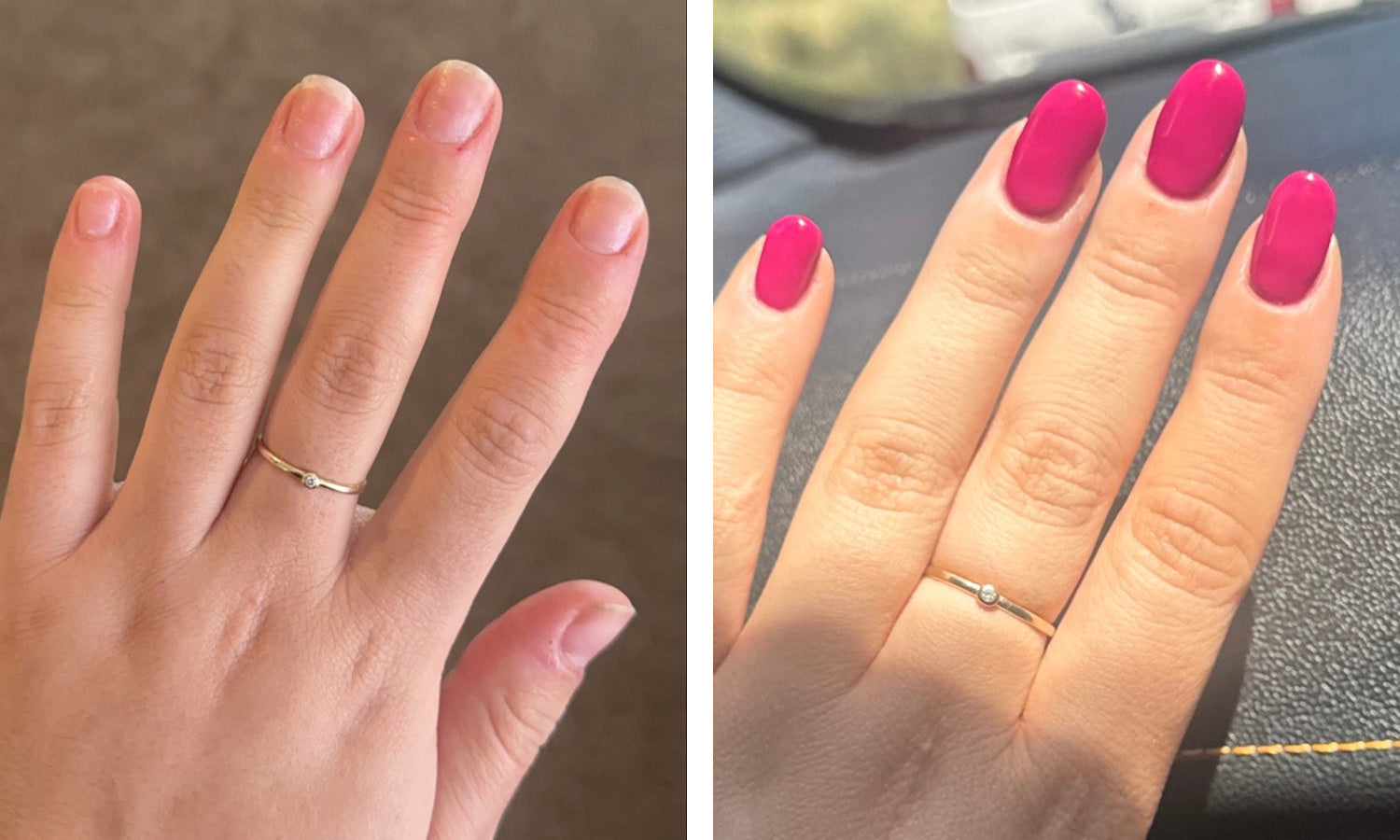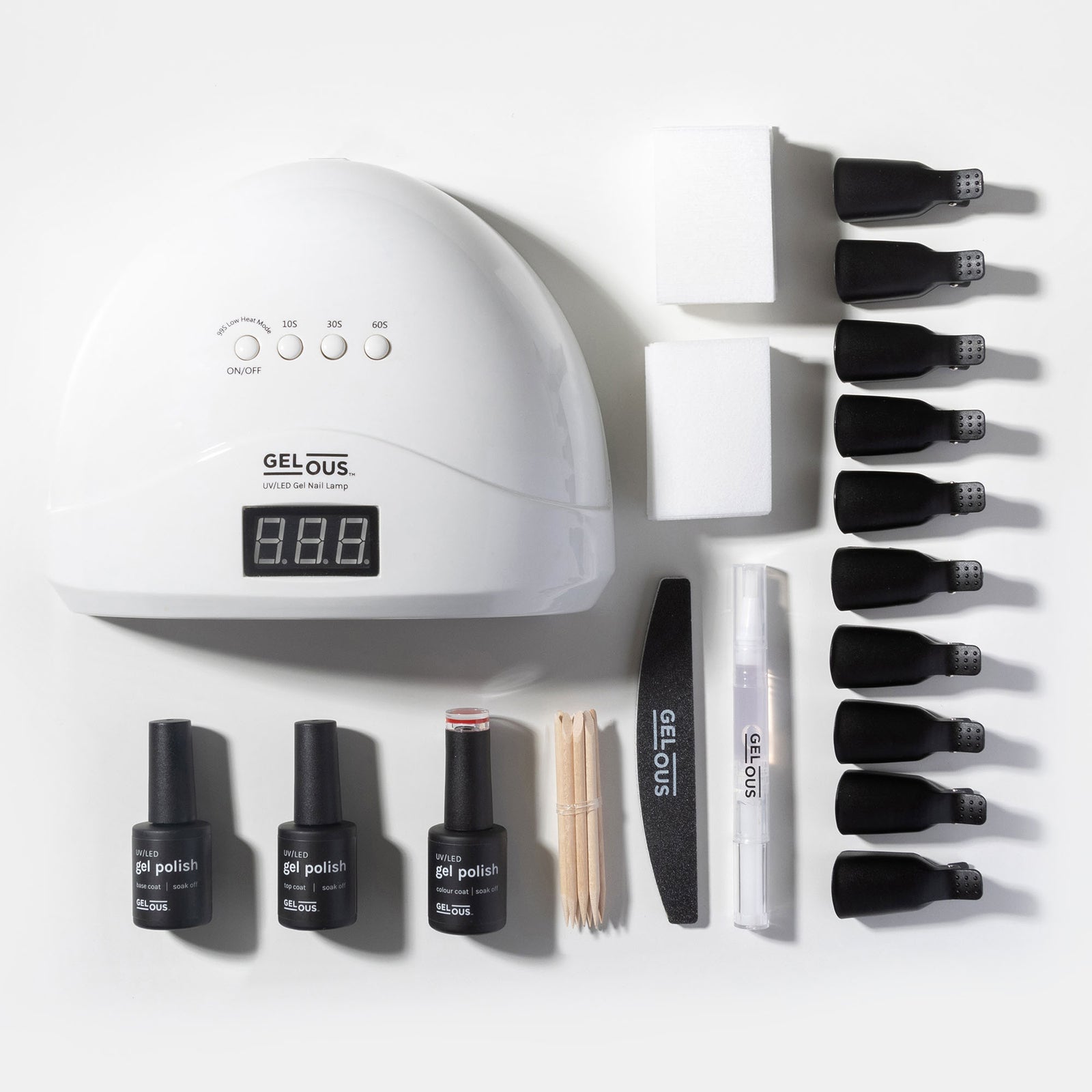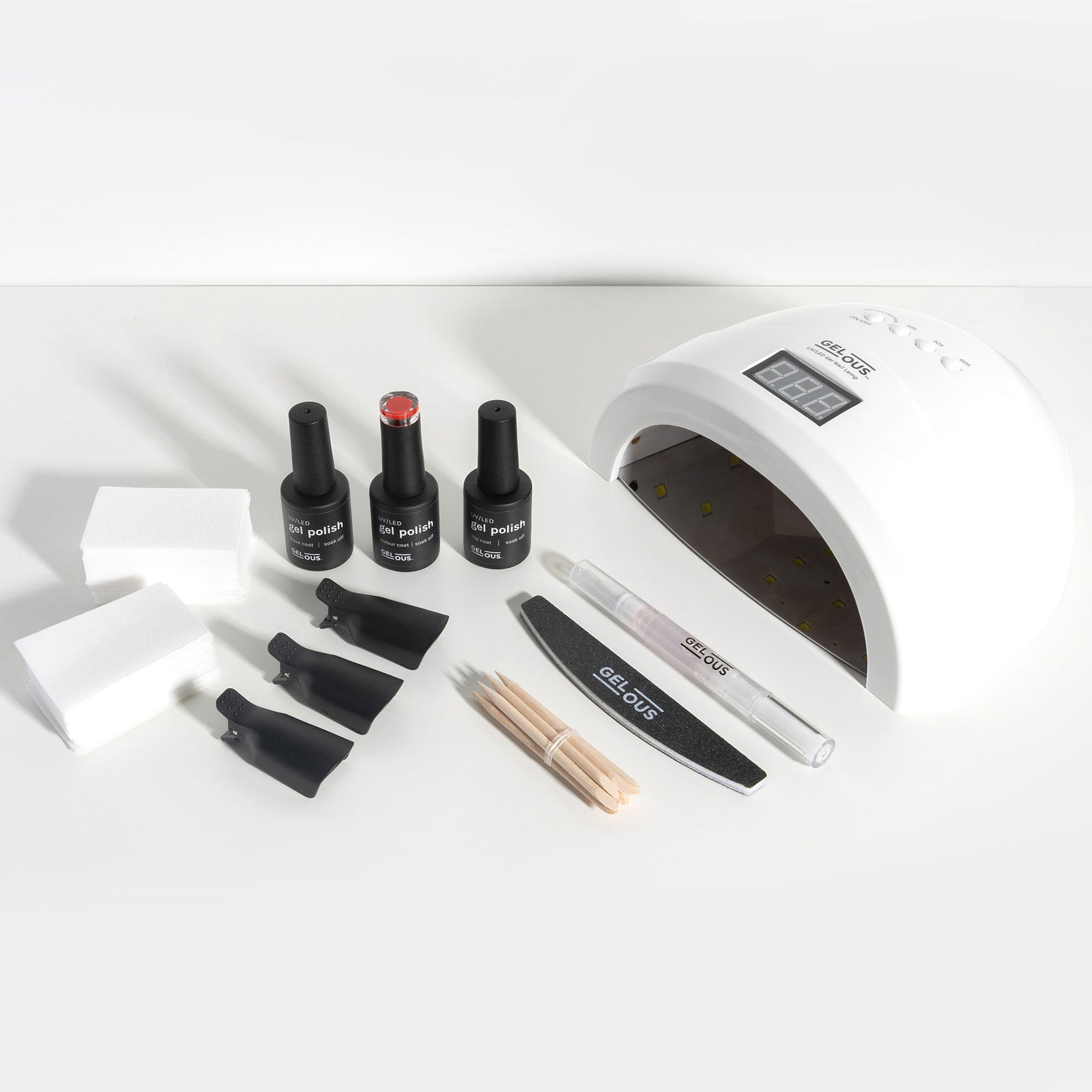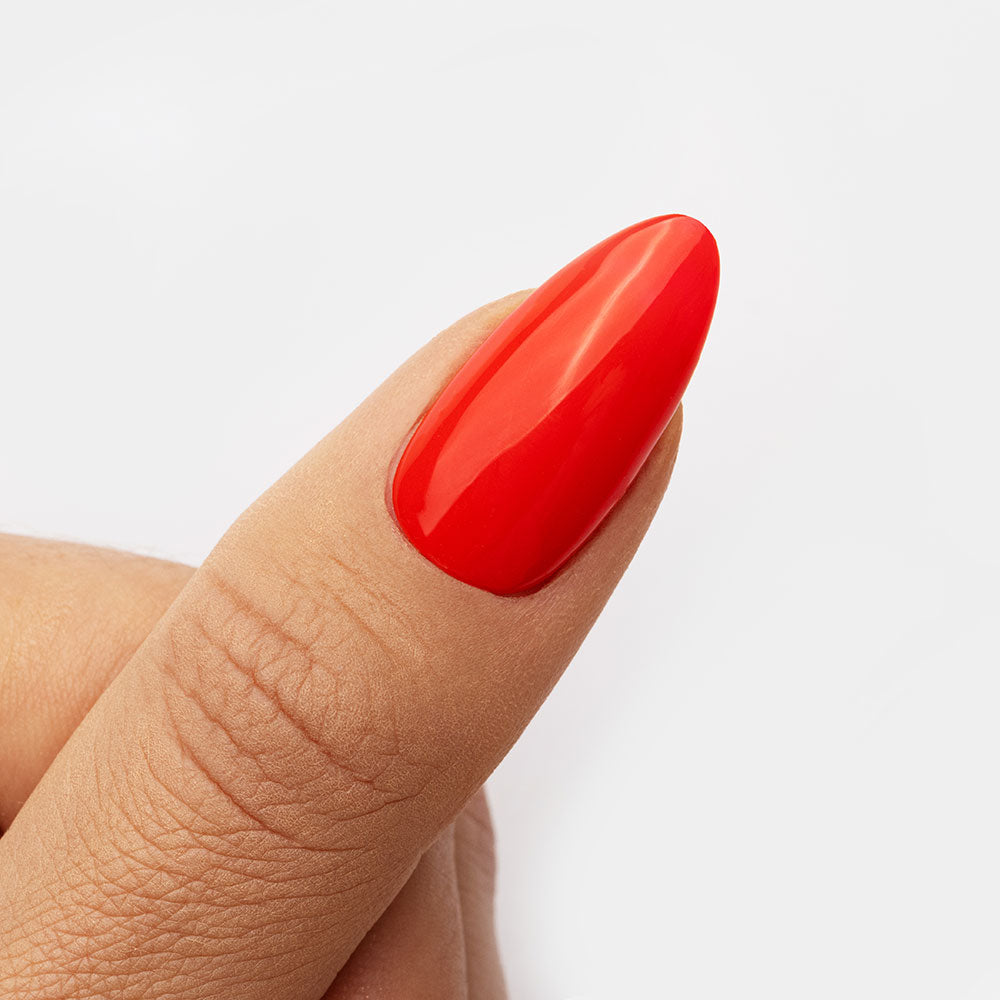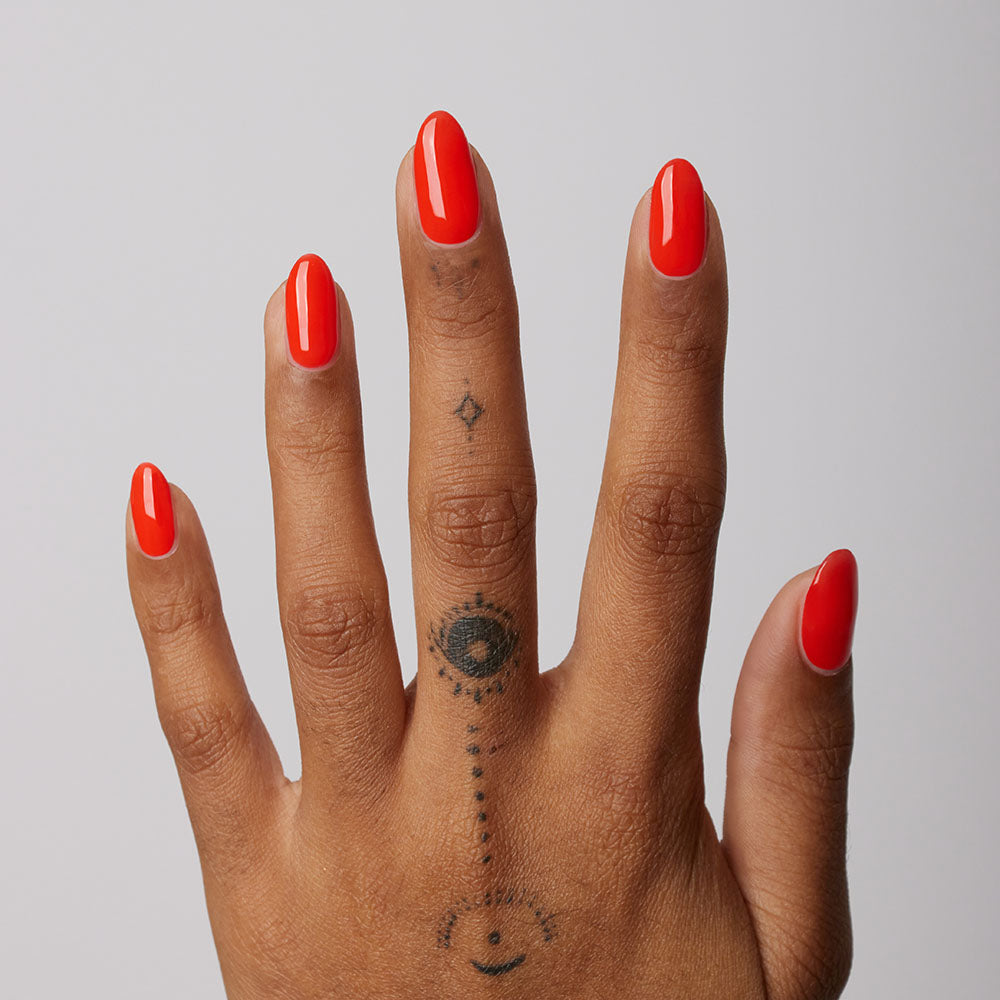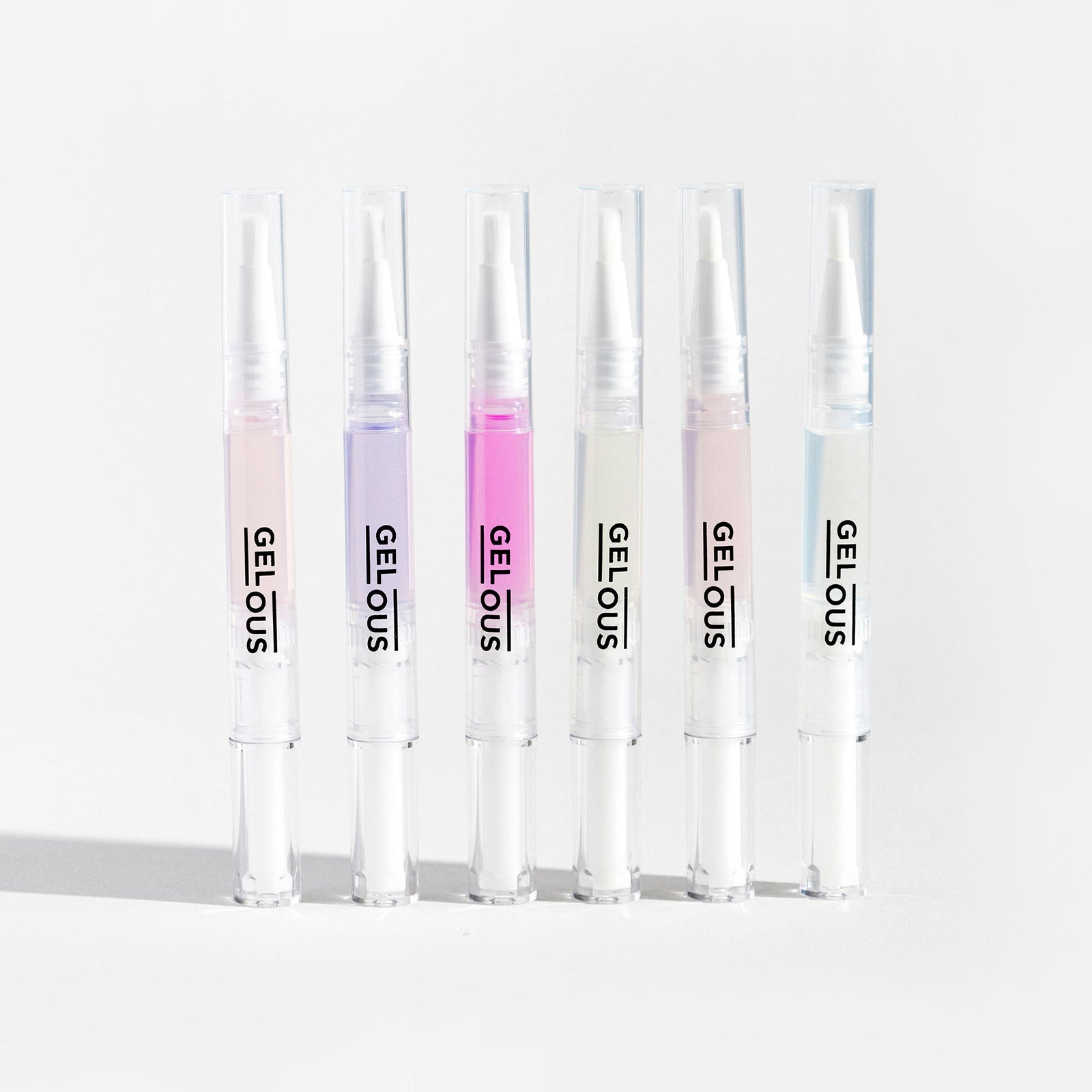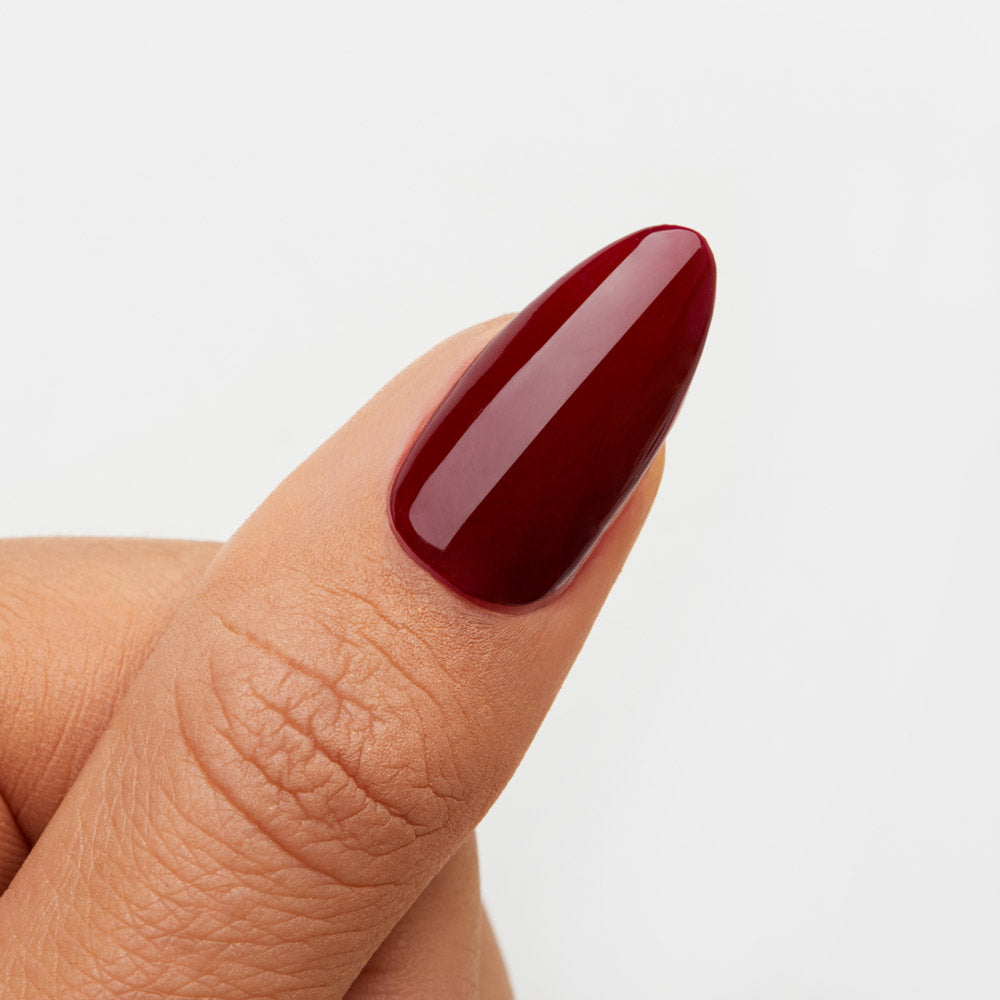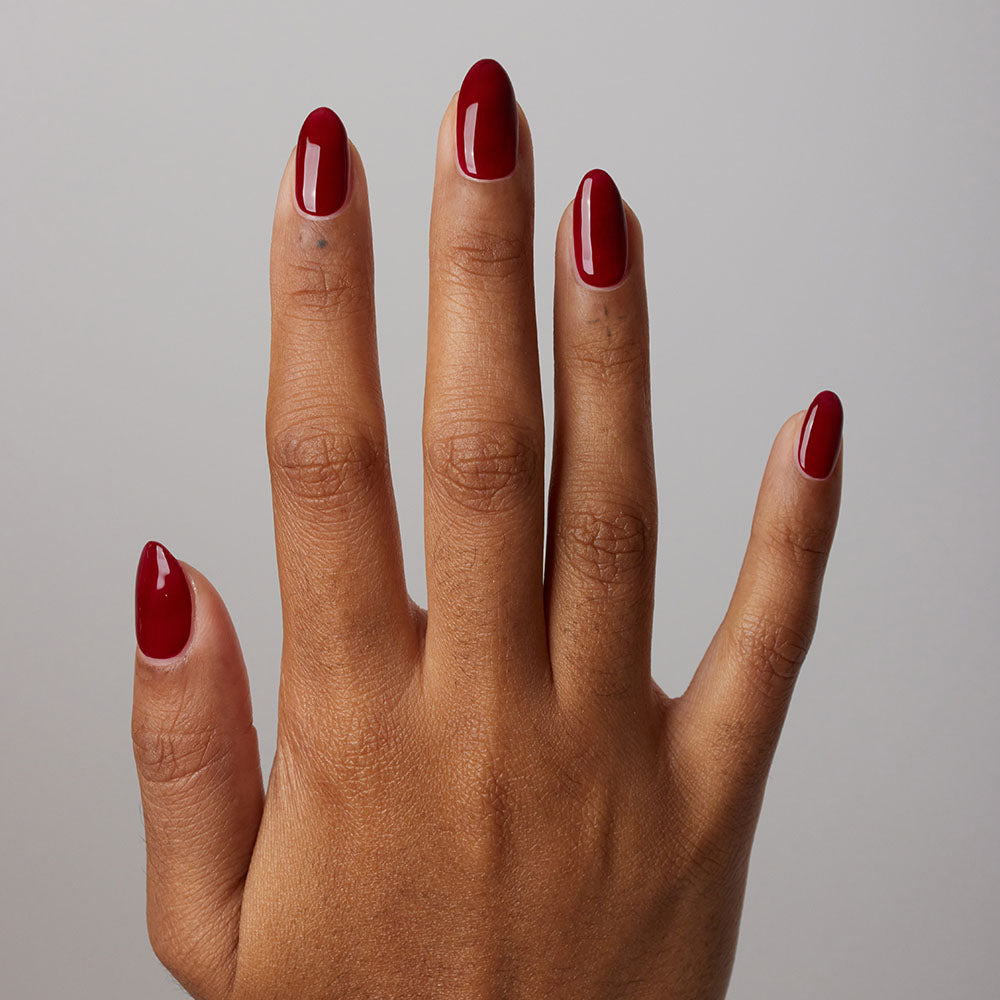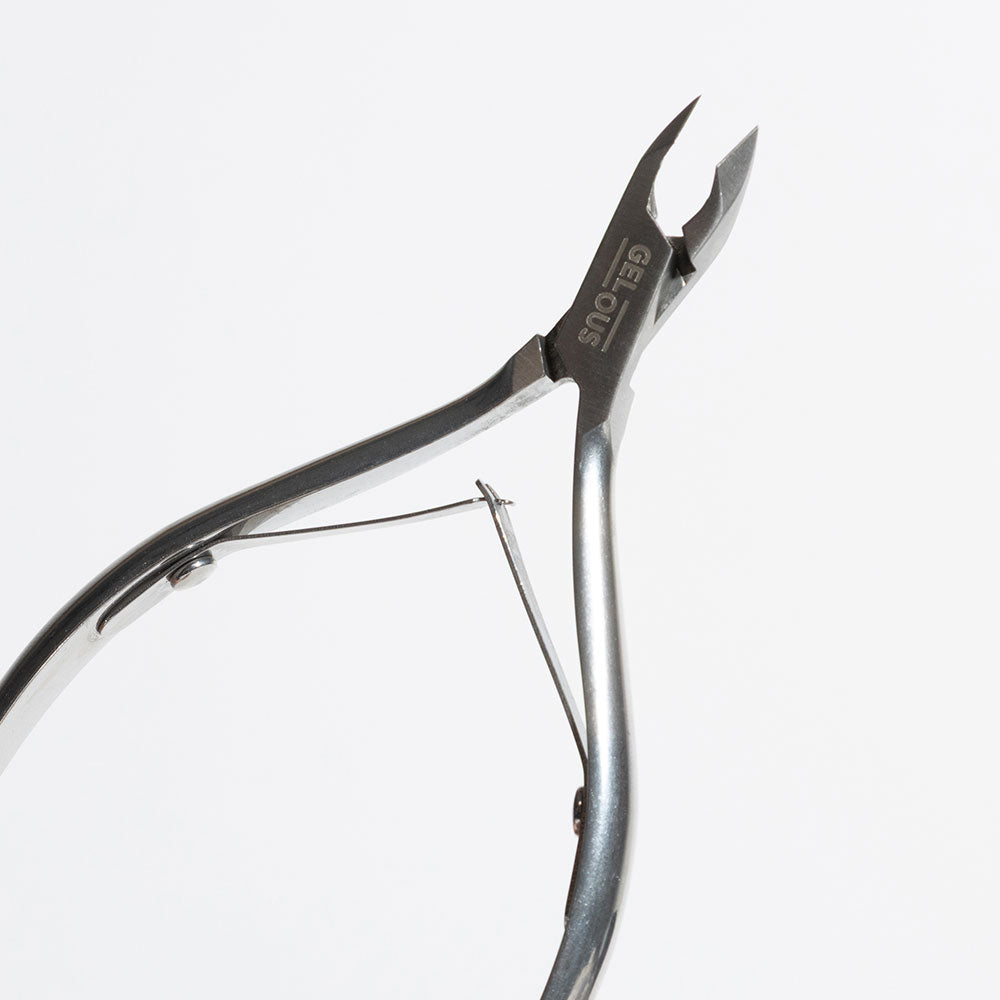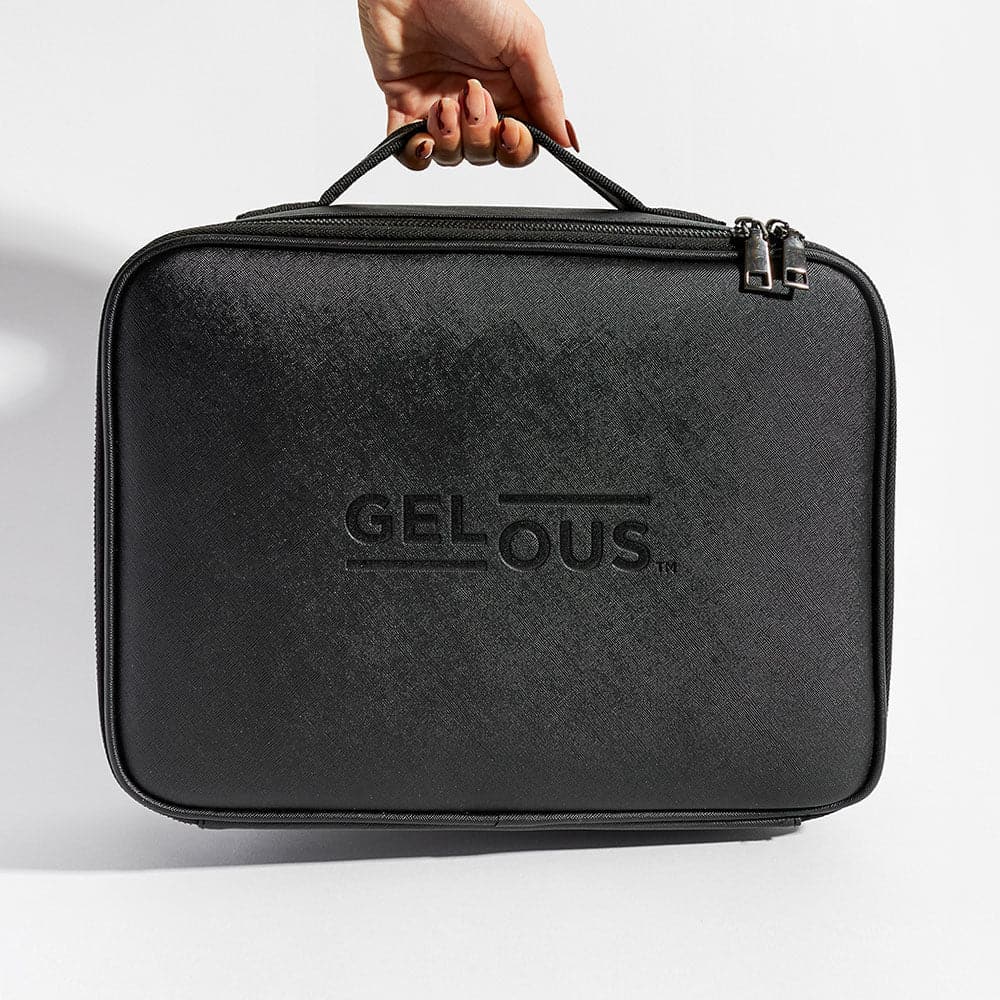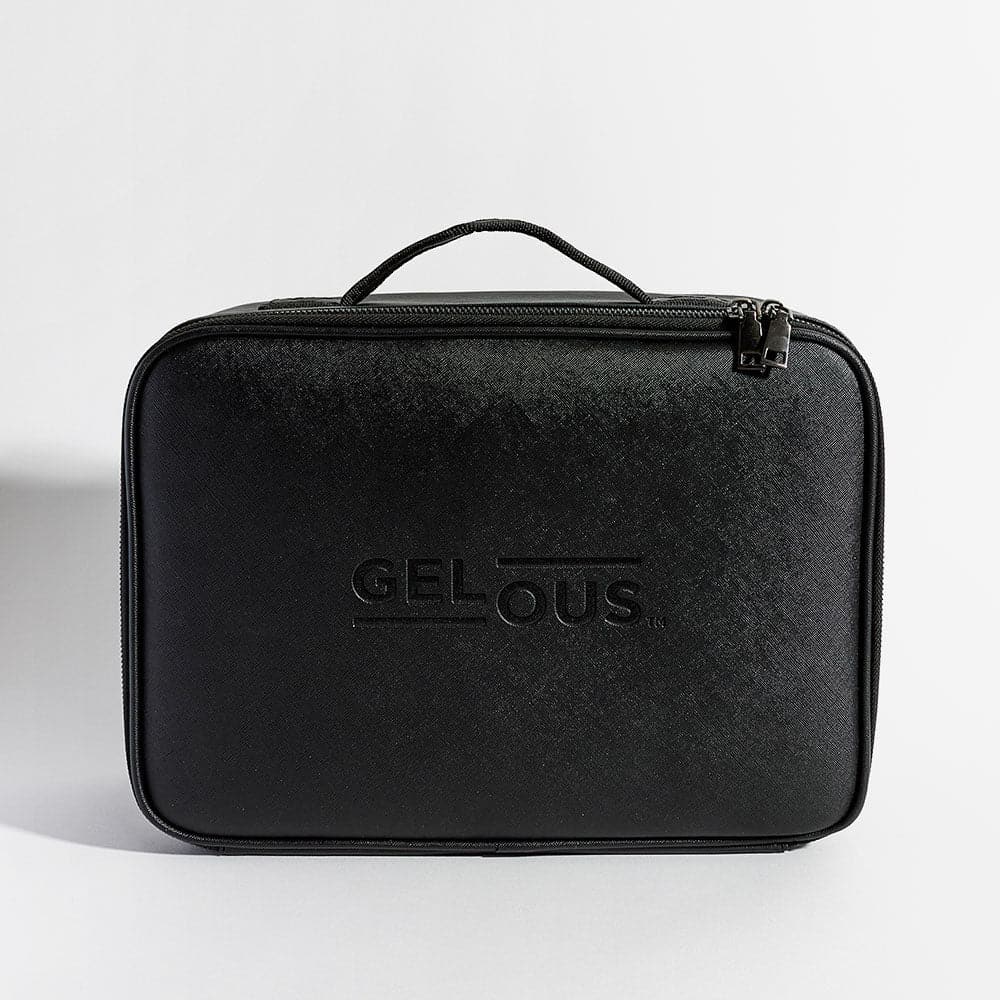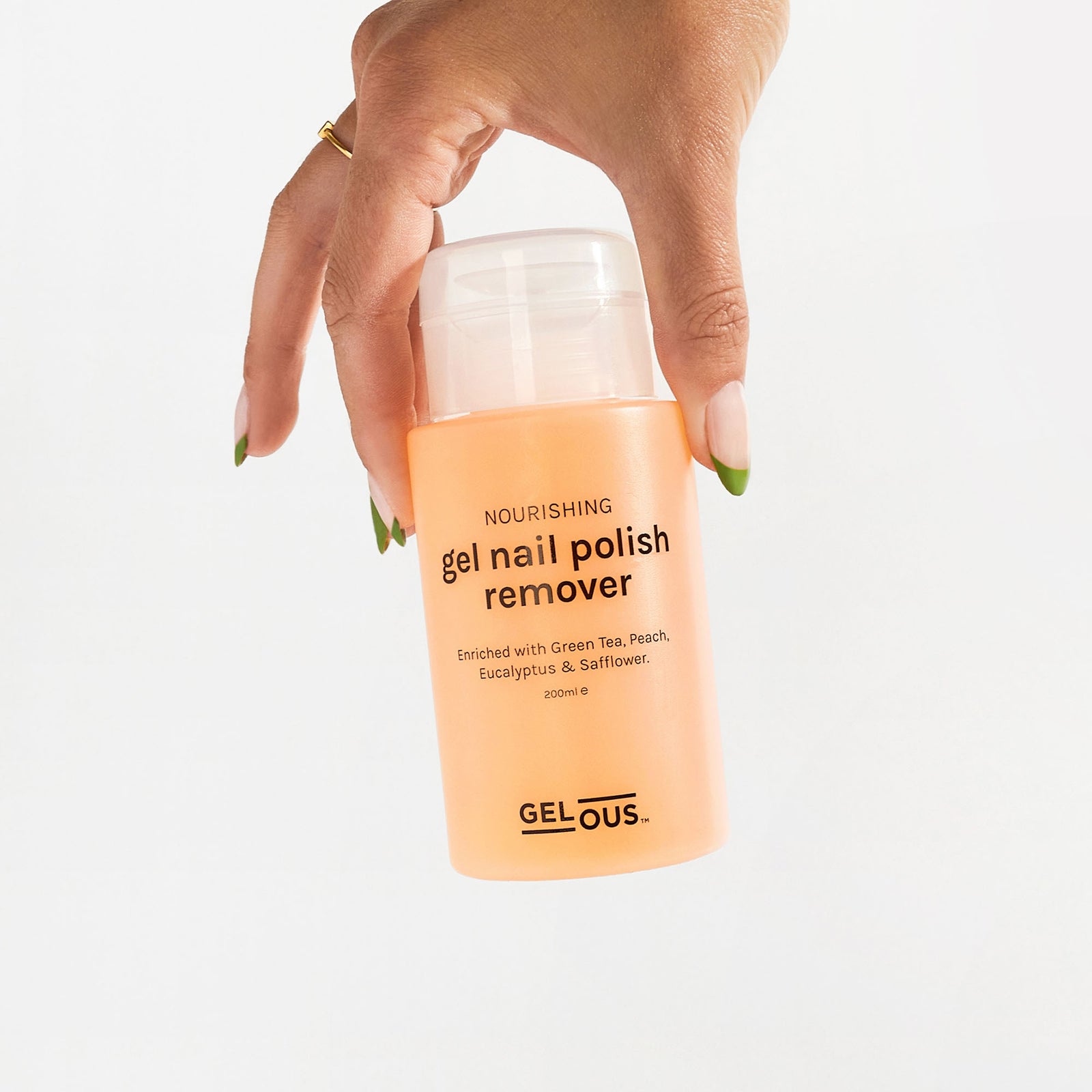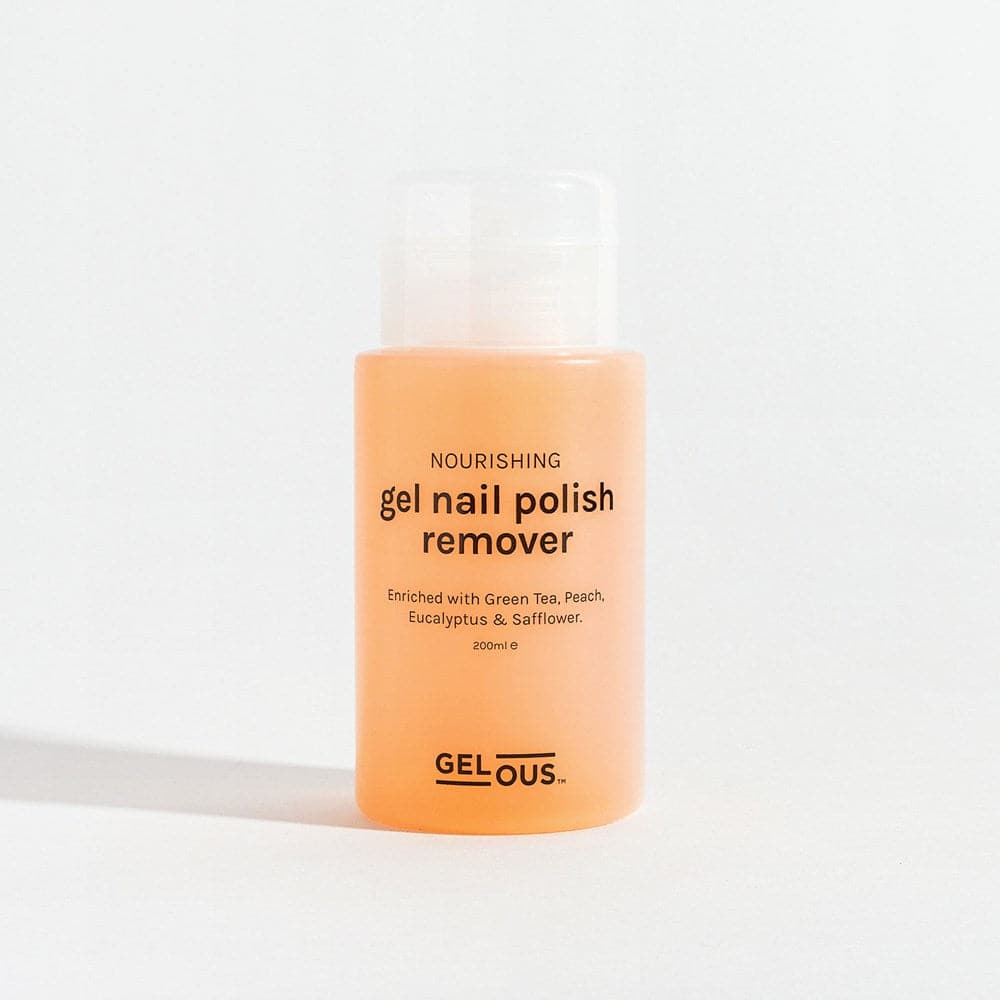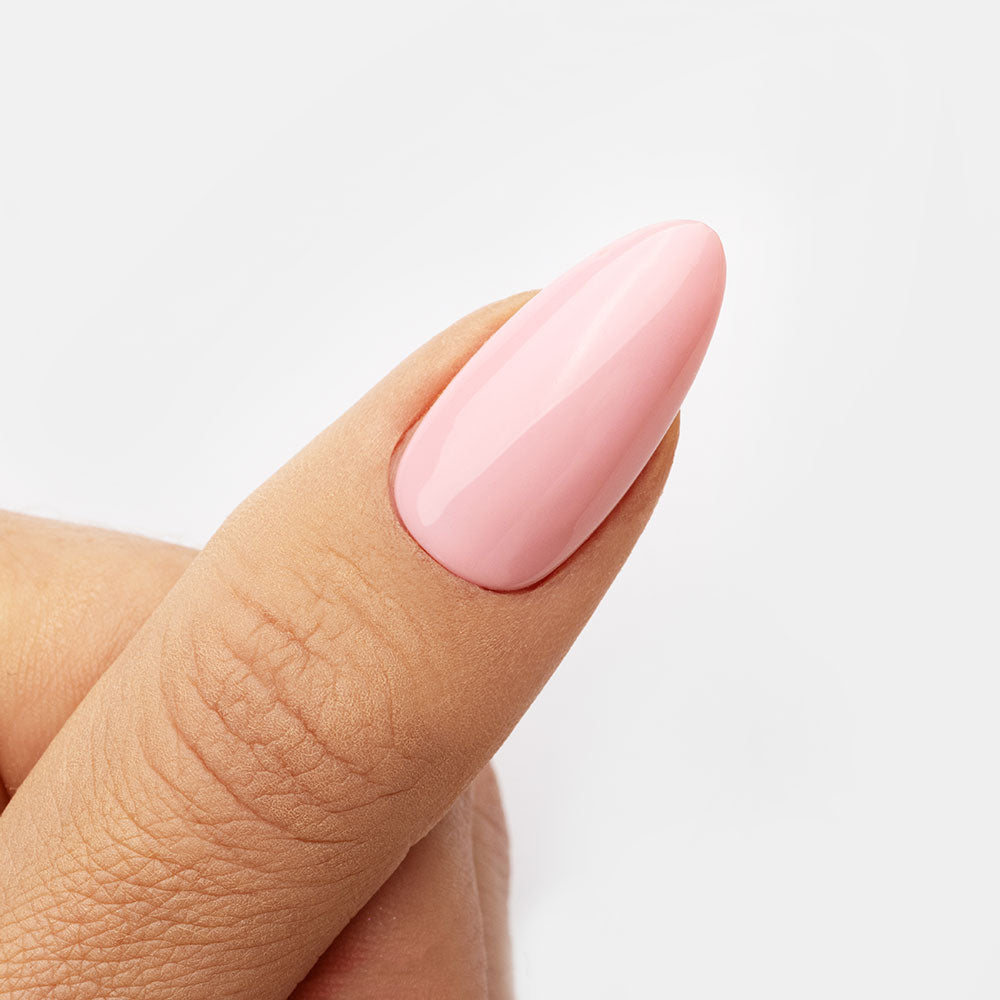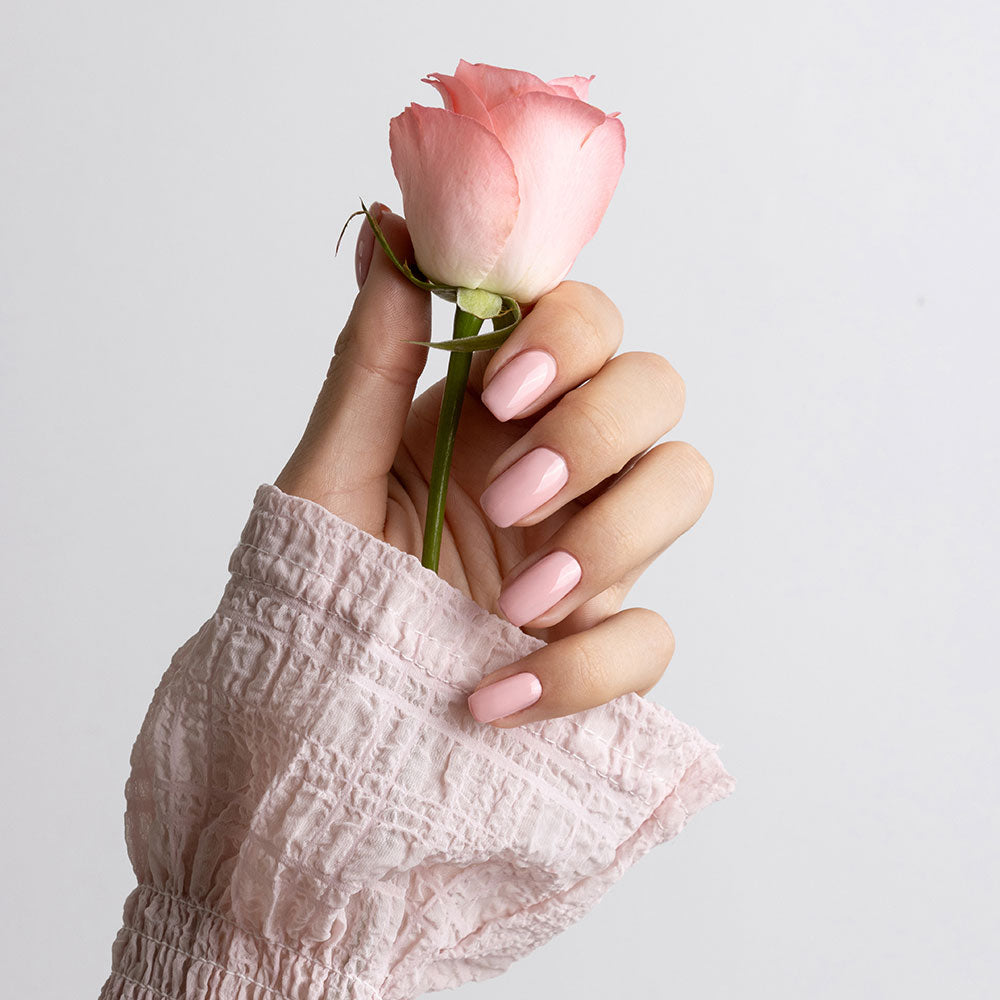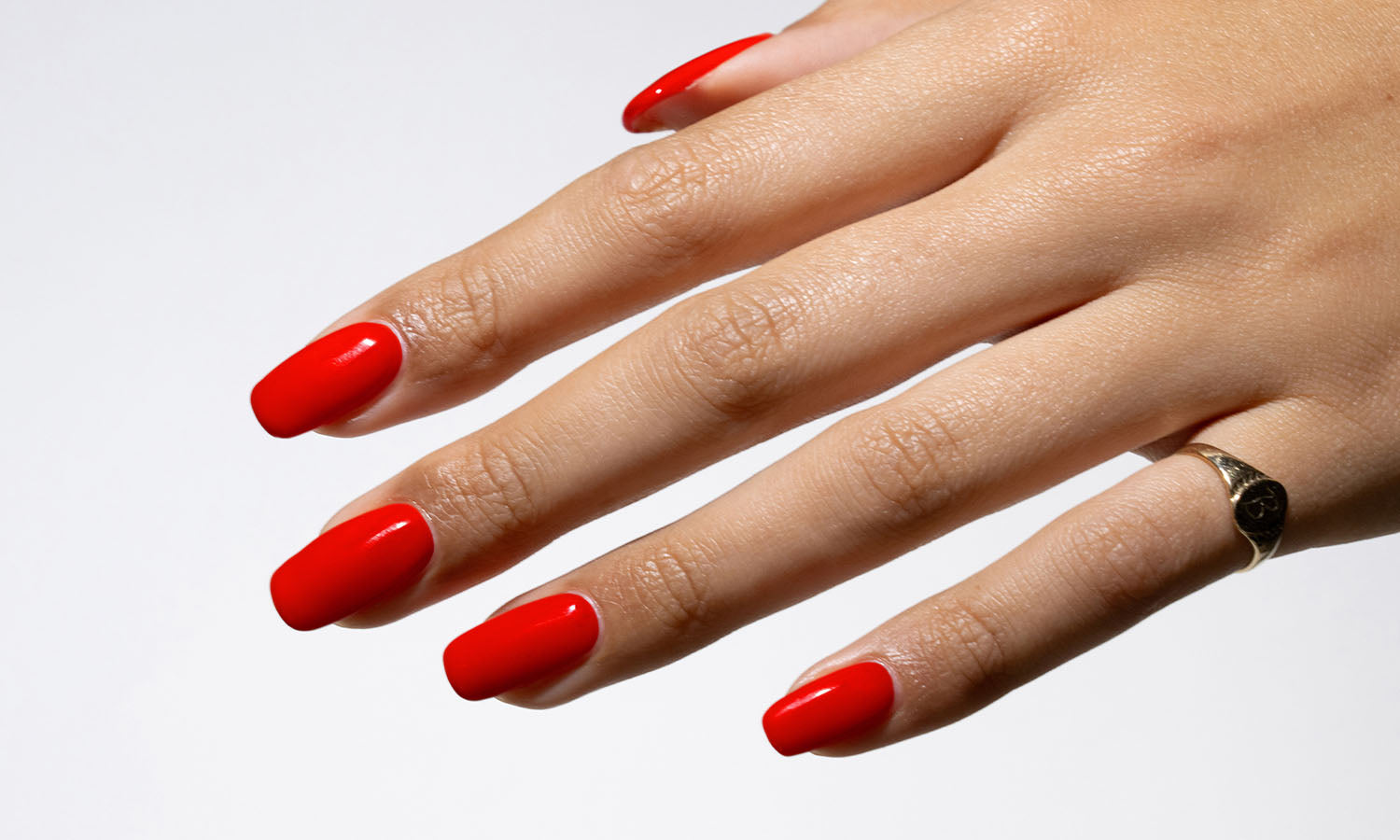We all want not only a good looking manicure, but also a long lasting manicure. Our simple, but effective tips will make all the difference in increasing the longevity of your gel nails. We're starting with the prep and finishing with the aftercare, keeping your hands glowing and your manicure looking fresh after weeks of wear.
How do I prepare my nails for a gel manicure?
Preparing your nails properly is the most important part of achieving a long-lasting gel manicure. Good nail prep improves adhesion, prevents lifting, and helps your Gelous Gel Nail Polish last for over two weeks. Here’s exactly how to prepare your nails for a gel manicure at home.
Start With Healthy Nails
Gel Nail Polish lasts longest on healthy nails. If your nails are thin, brittle or bending easily, give them some time to recover before applying gel. Strong, healthy nails provide the best foundation for long-lasting adhesion. Apply Cuticle Oil daily, incorporate a nourishing Hand Cream into your routine, and avoid using your nails as tools.
Push Back and Remove Cuticles
Cuticle care is essential. If Gel Polish sits on the skin or on “invisible cuticle” (the thin layer of dead skin stuck to the nail plate), your gel manicure will lift prematurely. When Gel Polish is applied over anything other than the nail, it forms a weak bond, and as the skin naturally moves, or your nails grow out, the gel lifts.
To prepare the cuticle area correctly, start by applying Cuticle Remover to soften any overgrown skin. Gently push back your cuticles using an Orangewood Cuticle Stick or Cuticle Pusher, or use the curved side of your Nail File if you prefer. If you use an E-File Pen, you can instead use a Cuticle Ceramic or Cuticle Diamond Drill Bit on Level 1, keeping pressure light and your strokes moving in one direction to avoid damage. Any loose, dead skin can be carefully trimmed with Cuticle Nippers. E-File Pen users can also finish with a Cuticle Polisher Drill Bit to smooth the cuticle area .
This thorough cuticle prep creates a clean surface for your gel to bond to, improving adhesion and helping your gel manicure last longer.
Buff the Nail Surface
Lightly buffing your nails creates the texture Gel Nail Polish needs to adhere properly. Use the fine 180 grit side of your Nail File and gently buff the entire surface of each nail until the shine is removed and it looks matte. Pay close attention to the sides of the nail and around the cuticle area, as these are common spots for lifting if not buffed thoroughly.
If you prefer using an E-File Pen, you can use a 240 Grit Sanding Drill Bit with light pressure, keeping the bit moving in one direction to avoid heat buildup or thinning the nail plate. The goal is not to thin your nails, but to create a subtle texture that helps your Base Coat bond securely and prevents the Gel Nail Polish from peeling prematurely.
Remove Dust, Oils and Residue
Even tiny traces of dust or oil can interfere with adhesion, so this step is crucial. After buffing, brush away the dust with a Dust Brush, then wash your hands and dry them thoroughly.
Next, use a Lint Free Wipe soaked in Gel Nail Polish Remover or a Pure Acetone Wipe to clean each nail carefully, including the sides and underneath the nail. This removes remaining dust and naturally occurring oils, ensuring the nail plate is perfectly clean before applying any products.
Dehydrate and Prime the Nail
To create the best possible adhesion, apply a thin coat of pH Bond and allow it to air-dry for 60 seconds. This fully removes any remaining moisture and balances the nail’s pH.
Follow with a thin coat of Nail Primer, also allowing it to air-dry for 60 seconds. Nail Primer creates a grippy surface for your Base Coat to adhere to, improving your gel manicures longevity.
How do I apply Gel Nail Polish perfectly?
Applying your Gel Nail Polish correctly is key to getting a smooth, long-lasting manicure. A few simple techniques can make a huge difference in preventing lifting, chipping and uneven curing.
Apply Thin, Even Coats
The most important rule is to apply thin coats of Gel Nail Polish, curing after each coat. Thin layers cure more effectively, reduce heat spikes, and prevent the Gel Nail Polish from shrinking or wrinkling. Pay close attention to the sides and edges of the nail, as this is where pooling can easily occur if too much product is applied.
Cap the Free Edge
Always cap the free edge with each coat—Base Coat, optional Builder Gel, Colour Coat and Top Coat. Sealing the edge helps stop water, oils and everyday products from getting underneath your gel manicure, which significantly reduces the risk of premature lifting or chipping.
Avoid the Skin and Cuticles
Aim to keep Gel Polish away from the skin and cuticle area. When gel cures on the skin, it can lift as your nails grow, taking part of the manicure with it. It’s best to leave a tiny gap between the polish and your cuticle for a crisp, professional finish. If any Gel Nail Polish touches the skin, remove it with an Orangewood Cuticle Stick, Nail Polish Remover Pen, or Nail Art Brush before curing.
Perfect Your Layers
If a coat doesn’t look smooth or you’re not happy with the application, simply wipe it off with a Lint Free Wipe soaked in Gel Nail Polish Remover before curing and start again. Taking a moment to correct it before curing will ensure your gel manicure looks smooth and professional.
Follow the Application Instructions Carefully
For the best results, make sure to follow the Gelous application steps carefully. Rushing or skipping steps can affect how long your manicure lasts. If you’re a visual learner, try our application videos for extra guidance.
How do I care for my gel manicure?
Caring for your gel manicure properly will make a noticeable difference in how long it lasts. Once your Gel Nail Polish is applied, everyday habits play a huge role in preventing lifting, chips and premature wear. With a few simple aftercare steps, you can protect your manicure, keep your nails healthy and enjoy a flawless finish for as long as possible.
Protect Your Nails During Daily Tasks
Everyday activities can impact how long your gel manicure lasts. Tasks like washing dishes, cleaning, gardening or using harsh household products expose your nails to warm water, soaps and chemicals that can soften Gel Nail Polish and weaken adhesion. Wearing gloves during these tasks will significantly extend the longevity of your manicure by preventing lifting, peeling or chipping.
Avoid Using Your Nails as Tools
Try not to use your nails to open cans, scratch labels or perform tasks that put pressure on the nail tips. This can cause the Gel Nail Polish to lift at the edges or even lead to nail breakage. If you notice a small chip, gently file it smooth with the fine side of your Nail File to prevent it from worsening.
Keep Your Nails Hydrated
Apply Cuticle Oil daily to keep the nail and surrounding skin nourished. Well-hydrated nails are stronger, more flexible and less likely to break or peel, helping your gel manicure stay flawless for longer. Follow with a nourishing hand cream to lock in moisture and maintain soft, healthy hands.
Be Mindful of Heat & Hot Water
Prolonged exposure to hot water, steam, saunas or baths, especially within the first 24–48 hours, can soften Gel Nail Polish and lead to lifting. Try to avoid very hot environments during this time to maintain the strength of your manicure.
Remove Your Gel Nail Polish Properly
Never peel or pick off Gel Polish, as this removes layers of your natural nail and causes thinning, brittleness and breakage. Always follow the correct Gelous removal method to keep your nails healthy between gel manicures.
With the right prep and a little care, your gel manicure can stay looking flawless for weeks. Follow these tips, take your time with each step, and you’ll see just how much longer your nails can last.









